The goal of our final project is to create a program that takes as input an image of a blackjack hand in progress and outputs the optimal strategy for all players at that stage in the hand. There are many points in a blackjack hand where a player must make a decision (most often this decision is whether or not to take another card). Our blackjack advisor automates this decision making process. To do so, the program must find the current state of the game by recognizing which cards are in play and which cards belong to which players. Then, it can look up the best play for each player in a large strategy table. Unfortunately, casinos do not allow computerized devices to assist players playing blackjack, so our blackjack advisor will not able to be used in real-world situations.

We make several assumptions to simplify the problem:
Note: This is an original project and we did not reference any previous work.
The computer vision portions of our algorithms are divided into two main parts. First, the segmentation of individual hands and cards out of the image, and second the determination of the values of the individual cards.
Segmentation begins with a few preprocessing steps. The image is scaled down, color thresholded (we only care about the white pixels), and then converted to grayscale. Next, edges are detected using Canny edge detection, and dilated to increase their size. The edges become the boundaries of the player hands, so we can then detect the dilated edges as contours in the image. Each contour corresponds to one player's hand, and we can then indicate where the hands are in the image:
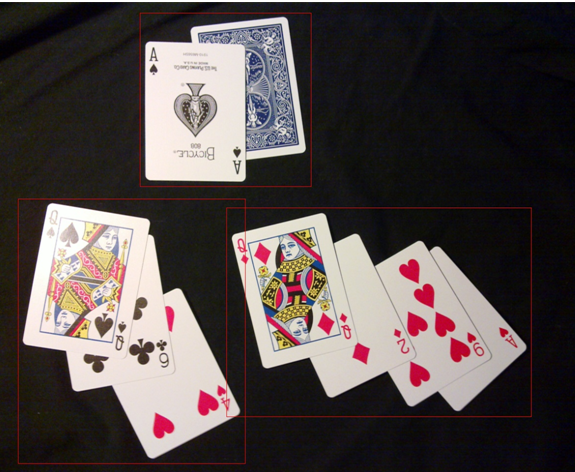
Next, we segment out individual cards from the hands. To do this, we compute the edges in the hand image with Canny edge detection, and then subtract those edges from the original image. This creates gaps between the individual cards so that when we find the contours in the hand image, each contour corresponds to an individual card. Here is a hand image with individual cards detected:
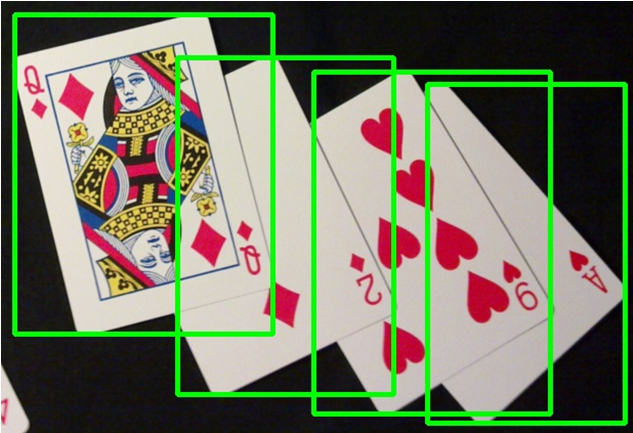
Now that we have individual card images, we can move on to actually recognizing the value of the card. To do this, we first rectify that card so that it is approximately flat and vertical. We find the four approximate corner points of the card using the visible corner points, known card sizes, and vector arithmetic. We then compute a homography between the four approximate corner points of the card and the four corner points of a flat, vertical card holder.
Once the card has been rectified, we know that the rank character of the card is in the bottom-right corner. We search this space for the first occurrences of non-white pixels to get a bounding box on the character.
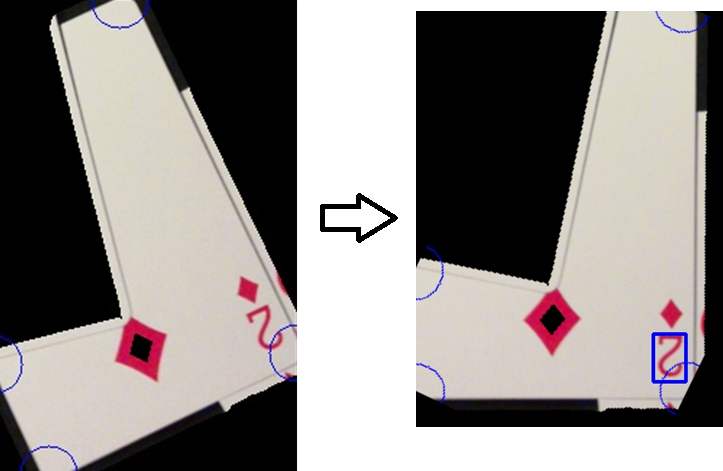
Next, we crop the rank character out of the corner of the card, and then run OCR (optical character recognition) methods to determine which character it is. We have a precomputed set of binary masks, one for each possible character. We scale the character that we cropped out of the image to the exact size of the masks, convert it to black and white, and then compare it with each mask. Whichever mask it is most similar to (by a simple sum of squared distances calculation) is the card rank of the card.
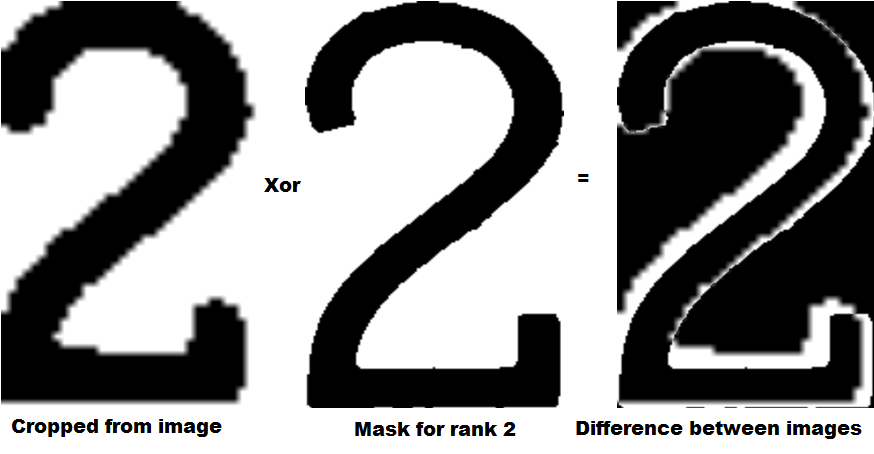
Once we have recognized the cards in an image, we do a lookup into a strategy table for blackjack to find the optimal action for each player. We then write this information along with the card information to the image to get our result:
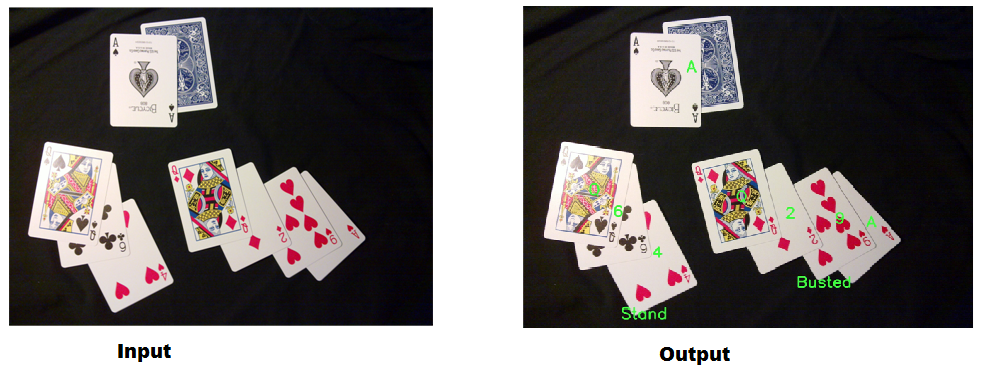
Our blackjack advisor works most of the time in basic cases. However, under certain lighting conditions, edges between cards become extremely hard to recognize and the program will fail. This happens because when two white card edges are overlapping, they are occasionally recognized as the same component (the same card).
Many of the issues that we had came down to parameter tuning. We have many different parameters that affect our results, and it is impossible to get every parameter perfectly tuned. Additionally, some calls in openCV seem to handle differently on the phone, than in linux, leading to further difficulties.
for this project we made use of various CV algorithms. To segment out cards, we need to be able to threshold images, detect edges, and find contours.
Even though these algorithms are fairly compact, we found that openCV does a much better job handling their data structures than we do. Since we want the code to be able to run on the phone, we opted to use their versions (cvThreshold, cvCanny, and cvFindContours), greatly speeding up our execution.
For the recognition section, we implement the rectification code ourselves, along with the "rank finding" (looking for the value of the card within the rectified image) code, and the OCR-like character recognition code
Matt worked on the card segmentation code and hacking the code into old phone code to get it running on the phone. Greg worked on the rank recognition (including card rectification) and the actual blackjack simulation code.
Here are a few ways we could improve our blackjack advisor if we had more time: